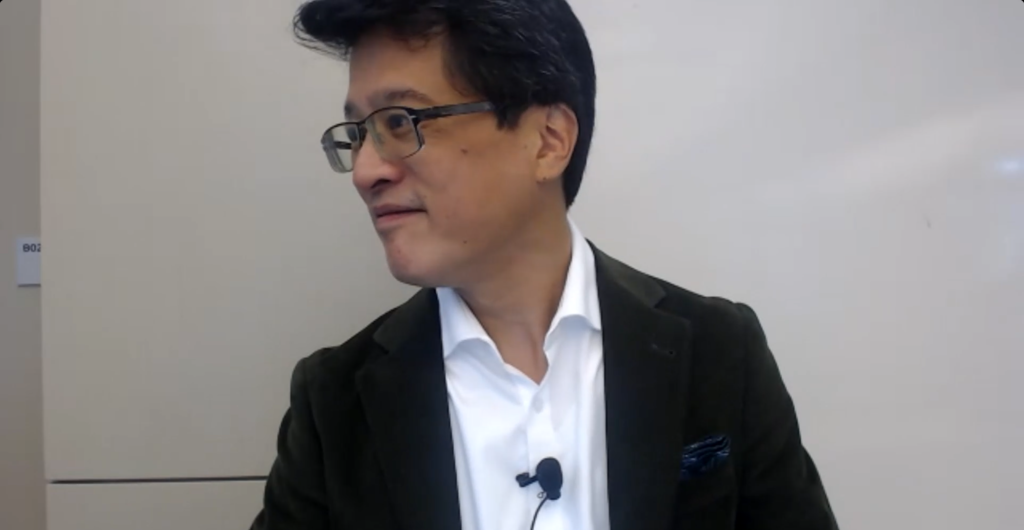
A strategic issue that many professors face within the university is how to teach in a world when one is both competing for attention in the Digital Age and also trying to justify value-add over other methods that people can use to educate themselves. For example, people can read books. They can watch videos on TikTok or YouTube. They can take classes remotely or even do self-study using online platforms. At the core when it comes to the classroom, professors compete against other learning resources that scale dramatically and are delivered at lower cost. I am all for further development of those types of resources and educational models, recognizing their benefits, challenges, and limitations. With that as context, I wanted to share some thoughts about how a professor can differentiate themselves when it comes to the traditional classroom and adding the most value.
The digital world doesn’t necessarily scale that well when it comes to compassion and developing interpersonal relationships, so I think a first key differentiator for professors can be to try to foster a good environment that connects real people together. That means focusing on multiple connections. Connect students to one another, perhaps via icebreakers. Encourage higher-level connections by fostering team-building and having people share their wants and desires. Set up a safe environment where people can learn. Invite constructive feedback. This past week I told students that I really “loved” how some of them were really blunt about their dislike for one of the assigned readings. They provided feedback that they weren’t sure how it was relevant, and so I did my best to frame things in the proper light (e.g., some pain is good for them, here are the essentials to take away beyond the classroom). Where students are receptive, I also try to make some time for students to meet me and one another outside of the classroom (e.g., meeting for coffee, drinks, breakfast, potluck dinner).
A second idea for differentiation is related to personalization (which is something I teach in my applied behavioral economics course). While professors often have responsibilities to follow specific instruction plans, I think there may be increased opportunities for students to be able to personalize (portions) the type of instruction they would like to receive. I recently held a class that allowed students to choose one of four doors that they could open, and then I led the class discussion in a direction based on what door they voted to open. I have heard through the grapevine (i.e., in this case Reddit) about other professors creating “liquid syllabi” where students can completely edit and provide suggestions to a syllabus via Google Docs and the like. I am not sure how workable that type of approach would be in reality. However, there seems to be value to customization and personalization of instruction, which is something else that digital platforms may not be able to do as well. I also think that being able to provide feedback to students on their work is a point where professors can differentiate themselves. However, given the size of classes, number of assignments, types of assignments, etc. there can be limitations on scaling this.
A third idea is around just-in-time education and providing bite-sized snippets of education (TikTok excels at bite-sized snippets). There is so much out there for students to learn. As professors learn where students’ interests lie, what their aspirations are, and where they are having trouble, it may be possible for professors to provide mini content or crash courses on material. As an example, I have often told students that they will likely see Scrum/Agile project management methods when they go into the working world. Perhaps one of the most brilliant books I have seen is the format of the book, Scrum: a Breathtakingly Brief and Agile Introduction by Chris Sims and Hillary Louise Johnson. The book is about 50-pages long with simple to-the-point language, a lot of cartoon-style drawings. It can be read in 20 minutes. For a classroom setting, I’ve even digested down this book further into a 2-4 minute crash intro to be delivered at the point when I sense students might need or want such information. While it may be harder for professors to compete against the digital world when it comes to delivering bite-sized, engaging information, perhaps there are opportunities to combine approaches from the digital world into the classroom (e.g., more use of Cameo, TikTok, YouTube, digital exercises/games).
A fourth area of potential differentiation is to provide students with opportunities to connect with the outside world. This could be by having guest speakers, offering unique case studies, facilitating access to projects in industry, or helping students develop new skills that can be used when they leave school (e.g., learning tools like R or Python). On the flip side to this, universities appreciate when alumni and companies can help to enrich the student classroom. Possible ways to help include donating money, sponsoring/hosting student projects, guest speaking, and offering to provide materials that can be used in the classroom. I am very thankful to people at companies like Acorns, Personal Capital, Telefonica, Vitality, Voya, and others for helping both me and my students with their learning journeys.
One of my aspirations in life is to give back to students and enrich their lives in some way. I am evolving my thinking on the best ways to teach in the classroom, so I welcome ideas and feedback. At some point, I also hope to think about how to extend teaching beyond the traditional classroom. Perhaps a topic for a future post.
